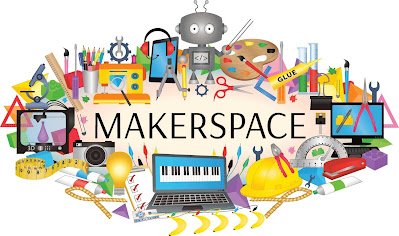Digital Makerspaces Using Google Drive

Digital Makerspaces Using Google Drive "Maker spaces promote learning through play; have the potential to demystify science, math, technology, and engineering; and encourage women and underrepresented minorities to seek careers in those fields." (Britton, 2012) One incredible resource that I found when researching about Digital Makerspaces is this Virtual MakerSpace by It was originally created by Shannon Miller , and she was kind enough to share the template for open use for librarians and teachers to adapt and modify it as they see fit. There are links for art, building, coding, design, engineering, music, reading, robotics, and more! I thought this was an incredible curation for elementary students, and you can see the time, effort, and energy that went into this project. This is a twist on the traditional in-person MakerSpace that I was familiar with. I love that students can access this MakerSpace at a...



